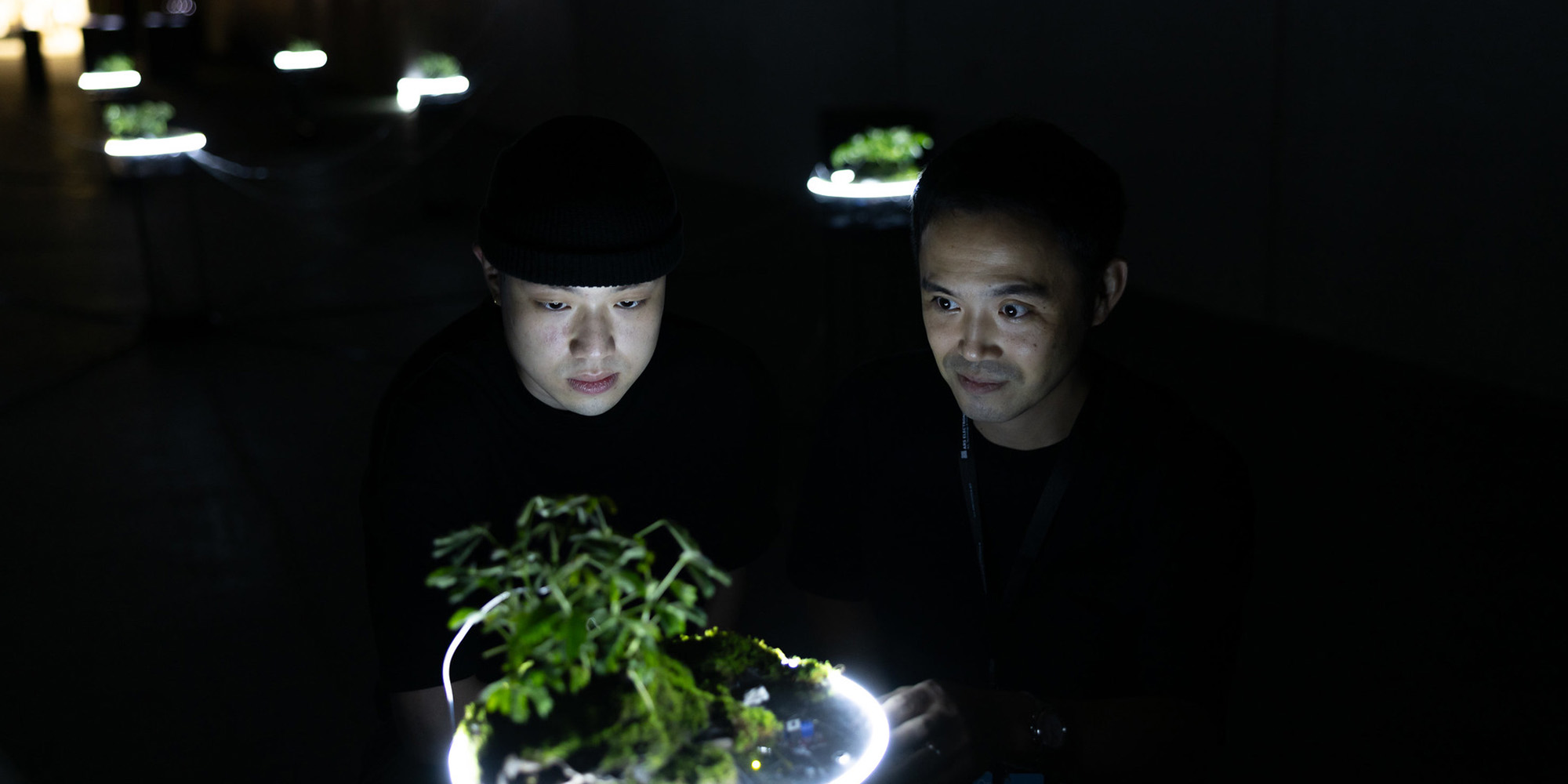One of the highlights of this year’s Ars Electronica festival is Becoming Different, a part of the Gardens Exhibition, curated by the Yasuaki Kakehi Lab and The University of Tokyo (JP). The exhibition is an exploration of the transformative aspects in the existence of objects, inspired by Gilles Deleuze’s philosophy of “becoming”. It challenges the idea of static identity and shows us that our identities, including those of objects, are not fixed but are in constant flux.
I had the chance to interview Chiaochi Chou (TW) and ask her about the work Synplant that she created together with Youyang Hu (CN) and Yasuaki Kakehi (JP). Chiaochi Chou is an artist, researcher and PhD student at National Tsing Hua University. She is committed to combining non-human organisms with her creations to create the viewer’s physical perception so as to explore the relationship between humans and nature.
Can you introduce Synplant to us?
Chiaochi Chou: Synplant is an installation that reads the natural environment from the perspective of plants and translates their experiences into audiovisual expressions that can be experienced by humans. The work uses an artificial intelligence-based learning system to analyze the bioelectrical activity of plants in response to environmental stimuli, and based on the results of that analysis, it creates an audiovisual field that represents the invisible trajectories of wind and rain in nature. This work positions plants as subjects of expression and invites viewers to engage with nature in a novel way.


What immediately struck me about this work was the synergy between nature and technology and how gracefully it is integrated. Can you explain how this work addresses the complicated relationship between nature and technology?
Chiaochi Chou: This project aims to depict the worlds as perceived by different species and the interactions between these microcosms. When placed within human-built factory spaces, it provides us with a reminder: artificial and natural are not in opposition; humans influence the natural environment and are also a part of it. We must not forget that there are other species concurrently involved in this system.
As I understand it, the project uses an artificial intelligence-based learning system to interpret the plant’s bio-signals. How does that work exactly?
Chiaochi Chou: In this work, a supervised learning algorithm was applied in conducting a time-domain-based analysis of the plant’s bio-signals. It can predict the biological feedback states of the plant under wind stimuli. A non-linear SVR model was trained to predict the wind intensity sensed by the plant as a continuous value between 0 and 255. To visualize the environmental wind sensed by the plants, an acoustic-lighting device is developed, comprising an LED light, a plastic petri dish container filled with water, and a resonance speaker. The system inputs the analyzed results into a pure data patch which generates corresponding sounds to a resonance speaker. The speaker vibrates the water in the petri dish, generating various resonant wave patterns, in response to different wind intensities. This system provides audiences with a physical and aesthetic audiovisual experience that facilitates a deeper understanding of the biofeedback of plants.
How does this installation reflect on your ideal to “understand technology’s impact on ecological evolution” as you write in your statement?
Chiaochi Chou: From agricultural practices dating back 100,000 years, humans have been using technology to influence the environment over an extended period. Initially, we attempted to control living organisms, and subsequently, we intervened in the interaction between humans and the natural world through technology. In recent years, there has been a growing emphasis on the subjective experiences of living beings, which I believe is gradually leading us towards a trend of universal equality. I am pleased to see technological advancements inspiring cultural change in this direction.
